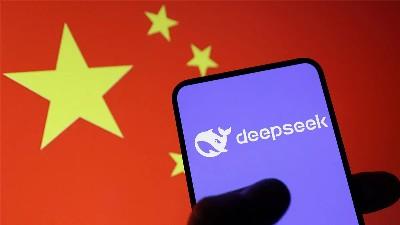
What US should grasp from DeepSeek’s technological leap
Ding Gang
The Chinese AI firm DeepSeek has recently garnered significant attention in the global technological landscape. It has developed AI models that not only rival but, in some cases, surpass those of leading American companies. This achievement is particularly noteworthy as it has been accomplished despite hardware constraints, through the application of innovative algorithms and efficient engineering design.
However, this has raised concerns in the US, not only regarding the so-called national security but also about American hegemony in the technological field. Access to DeepSeek technologies has been blocked in the Pentagon and NASA. A senator even proposed jail time for individuals who download DeepSeek.
Still, with DeepSeek serving as a microcosm of China’s technological advancement, the US anxiety and various crackdown measures only serve as a testament to the resilience and adaptability of Chinese innovation in the face of external pressures. DeepSeek’s success illustrates the “effect” of Washington’s technological blockade against China.
Taking chip export restrictions as an example, the US believes that Nvidia’s high-end chips (such as the H100) are key to training large-scale AI models. By restricting China’s access to these chips, the US aims to slow down the development of AI technology in China.
However, DeepSeek has not only developed advanced AI models on performance-limited chips through optimized algorithm design and resource allocation but it has also significantly reduced costs. This demonstrates that technological innovation does not solely rely on high-end hardware. It can also be achieved through various paths, such as algorithm optimization, improved computational efficiency and utilizing open-source technologies.
In fact, past technological successes in the US have followed such diverse paths, but Washington forgot about this when launching its containment strategy against China. It has been blinded by a desire for sustaining hegemony.
The current US strategy to curb high-end technology in China can be classified as a continuation of a “Cold War mentality.” This mind-set, reminiscent of the ideological and technological competition of the Cold War era, holds that implementing technological blockades, resource restrictions and economic isolation can stifle a strategic opponent’s rise. This strategy is based on two significant misjudgments: the belief that China’s technological progress can be halted through such measures, and the assumption that the global technological landscape remains under the control of a few dominant players.

First, China is an economically powerful country deeply embedded in globalization. It is the global manufacturing center and the largest creator and consumer of data, possessing the world’s most active digital economy market. From production to application, China’s technological development has always been integrated with both domestic and international markets, and over the years, it has nurtured a large pool of technical talent.
Second, Washington has misjudged the current international technological ecosystem. The world has undergone profound changes; China is not only an essential powerhouse for the world economy but it has also formed deep economic ties with many countries, along with technological and talent connections. In the era of the global internet, the diffusion of technology is more complex to control than at any time in history.
Even if specific high-end hardware and software are restricted, China can still achieve technological development through open-source communities and its own engineering capabilities.
China is the world’s most significant data producer and the most prominent internet market with data serving as the “fuel” for AI training. Chinese companies can leverage rich application scenarios to accumulate key data in natural language processing, computer vision and industrial applications. This endogenous cycle of market and technology provides lasting momentum for China’s AI innovation.
In this context, attempting to curb technological development by restricting hardware is akin to blocking a main river while ignoring the flow of countless small streams. When companies face resource constraints, they often spark greater technological innovation, as demonstrated by the DeepSeek team’s strong adaptability, which reflects the Chinese idiom: “finding a new path.”
The core issue of Washington’s strategy to curb China lies in a flawed “power-hegemony” logic, which fundamentally overlooks the complex realities of globalization and the characteristics of China’s growth. This situation resembles the traditional Chinese game of Go, where one player tries to block their opponent’s liberties, only to forget that the opponent had already taken control of the board yesterday. The game will ultimately demonstrate that hegemonism’s arrogance and misjudgment of reality will continually undermine Washington’s foundational path of strategic development.
The writer is a senior editor with the People’s Daily, and currently a senior fellow with the Chongyang Institute for Financial Studies at the Renmin University of China
